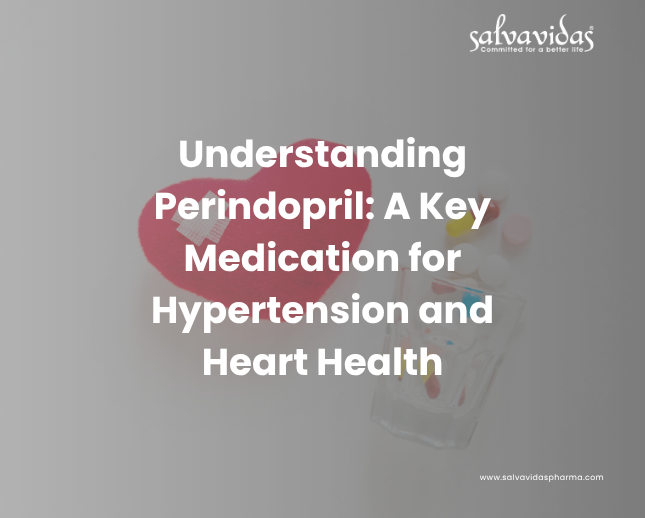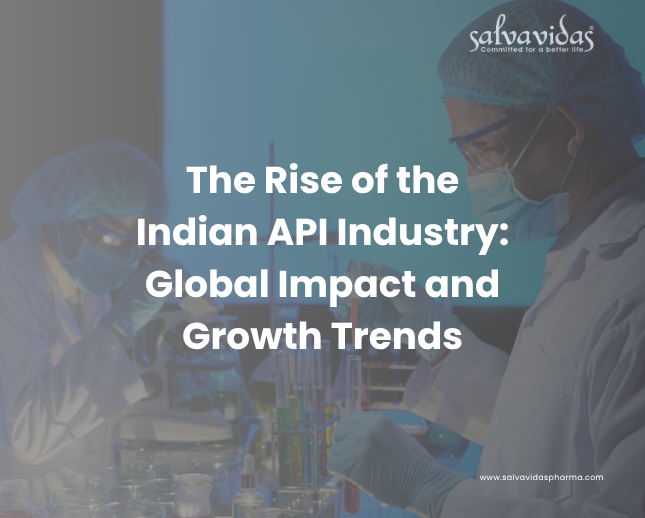
In today’s fast-paced world, the rise in hypertension and heart-related conditions has become a global concern. With millions affected by high blood pressure and cardiovascular diseases, finding effective and reliable medications is essential. One of the most widely prescribed treatments is Perindopril, an ACE (Angiotensin-Converting Enzyme) inhibitor known for its important role in managing blood pressure and supporting overall heart health. In this blog, we’ll explore what Perindopril is, how it works, its common uses, and why it continues to be a preferred choice among healthcare professionals. What is Perindopril? Perindopril is a prescription medication that belongs to a class of drugs known as ACE inhibitors (Angiotensin-Converting Enzyme inhibitors). These medications work by relaxing blood vessels, making it easier for the heart to pump blood throughout the body. This action helps lower blood pressure and reduces the risk of heart attacks, strokes, and kidney complications. One of the most commonly used forms is Perindopril Erbumine, which is the erbumine salt of perindopril. This formulation is widely prescribed due to its excellent absorption profile and good tolerability in patients. How Perindopril Works in the Body Perindopril works by blocking the enzyme that converts angiotensin I into angiotensin II- a substance that causes blood vessels to narrow. By reducing the levels of angiotensin II in the body, Perindopril allows blood vessels to relax and widen, effectively lowering blood pressure. This reduction in pressure not only eases the heart’s workload but it also improves the delivery of oxygen and nutrients to vital organs. As a result, Perindopril is also used in the long-term management of heart failure and to reduce the risk of stroke in individuals with high blood pressure Common Dosages: Perindopril 4mg and Perindopril 8 mg Perindopril is available in various strengths, with Perindopril 4mg and Perindopril 8 mg being the most commonly prescribed doses. Doctors typically adjust these doses based on a patient’s age, medical condition, and how well the medicine is tolerated. Perindopril 4mg: Commonly used as an initial dose for patients with mild hypertension or those beginning treatment. Perindopril 8 mg: A higher maintenance dose prescribed for patients requiring stronger blood pressure control or those with established heart conditions. These dosages should only be taken as directed by a physician to avoid adverse effects or complications, especially in an era where therapeutic treatments are moving toward greater precision and personalization. Perindopril Uses: What Conditions Does It Treat? Perindopril is effective in managing a range of cardiovascular and kidney-related conditions. Below are its primary uses: 1. Hypertension (High Blood Pressure) Perindopril is primarily used to treat high blood pressure. By lowering blood pressure, it helps reduce the risk of strokes, heart attacks, and kidney problems. 2. Heart Failure Perindopril is used in the management of congestive heart failure. It reduces strain on the heart, helping to relieve symptoms such as shortness of breath and fatigue. 3. Stable Coronary Artery Disease For patients with stable coronary artery disease, Perindopril helps lower the risk of heart-related events by improving blood flow and reducing workload on the heart. 4. Post-Stroke Risk Reduction Perindopril may also be prescribed after a stroke, or in patients at high risk of stroke- especially when used in combination with other medications to reduce the likelihood of recurrence. Perindopril Erbumine: A Preferred Formulation As mentioned earlier, Perindopril Erbumine is a widely used salt form of the Perindopril. It offers consistent and effective blood pressure control and is known for its good bioavailability. This formulation is often preferred by healthcare providers when managing patients with chronic cardiovascular conditions due to its reliability and tolerability. Potential Side Effects and Precautions Like all medications, Perindopril may cause side effects. Common side effects include: Dizziness or lightheadedness Dry cough Headache Fatigue More serious but uncommon side effects include kidney problems, high potassium levels, or angioedema- a rare allergic reaction causing swelling of the face or mouth. Before starting Perindopril, patients should inform their doctor or healthcare provider about any existing medical conditions or other medications they are taking to avoid potential interactions or complications. Perindopril though widely used as an active pharmaceutical ingredient—is not recommended during pregnancy, and individuals with kidney disorders should use it with caution under close medical supervision. Why Perindopril is Trusted Worldwide Numerous clinical trials have demonstrated the effectiveness of perindopril. It is trusted globally for its ability to reduce long-term cardiovascular risks and for its compatibility with other blood pressure medications. Perindopril continues to play a key role in the treatment of hypertension and heart-related conditions both in its generic and brand-name forms. Conclusion Perindopril remains one of the most effective and widely prescribed ACE inhibitors for managing high blood pressure and supporting heart health. Whether used in its standard form or as Perindopril Erbumine, the medication delivers proven results with a favorable safety profile. With flexible dosage options like Perindopril 4mg and Perindopril 8 mg, healthcare providers can personalize treatment plans to meet individual patient needs. Understanding how Perindopril works, what it treats, and why it’s trusted helps patients take a more informed, proactive role in their heart health. If you’re considering Perindopril or are currently taking it, always consult your healthcare provider for personalized advice and regular follow-up. Have questions or need support? Contact us today to learn more.

In the intricate world of pharmaceuticals, one segment stands tall in shaping global health outcomes: Active Pharmaceutical Ingredients (APIs). At the core of every medicine is an API, and increasingly, at the core of global API supply is India. Over the last two decades, the Indian API industry has evolved from a low-cost supplier into a global powerhouse, delivering critical drug ingredients to over 200 countries and playing a vital role in the international healthcare ecosystem. But this rise wasn’t accidental, it’s a story of foresight, infrastructure, and resilience. India’s Strategic Edge in the API Landscape India’s entry into the global API arena began with a simple advantage: the ability to produce pharmaceutical raw materials affordably and at scale. This cost advantage, however, quickly evolved into something more substantial, technical expertise, regulatory compliance, and consistent global exports. Today, India is the third-largest manufacturer of APIs in the world, accounting for about 20% of the global supply. It’s no longer just about cost it’s about trust. Global pharmaceutical giants rely on India for the critical chemicals needed to produce life-saving drugs, and that confidence continues to fuel India’s leadership in the API space. From Domestic Production to Global Dominance The foundations of this growth lies in the broader Indian pharmaceutical industry, which contributes over 3% of global pharma output by volume. As finished dosage manufacturers expanded operations, the demand for domestically produced APIs surged. This demand spurred the development of a vibrant network of bulk drug manufacturers across states like Gujarat, Maharashtra, and Andhra Pradesh. Some of the major milestones in India’s API journey include: 1990s: Policy reforms and changes to patent law encouraging in-house development 2000s: Entry of Indian firms into regulated markets like the US & EU 2010s: Global recognition for quality compliance and affordability 2020s: Strategic shift post-COVID, with the government launching the PLI Scheme to boost local production and establish key bulk drug manufacturing clusters Global Impact: Keeping the World Supplied India’s role became even more critical as the COVID-19 pandemic disrupted global supply chains. Indian enterprises not only ramped up production of essential APIs, but also ensured continued shipments despite lockdowns, border closures, and widespread logistical challenges. Today, Indian API suppliers are embedded in the core operations of global generics, vaccine producers, and even developers of innovative therapies. As a result, the quality, availability, and affordability of medications from New York to Nairobi often trace back to India’s pharmaceutical raw materials sector. What Makes India a Global API Partner of Choice? Let’s explore the key factors behind this global preference: Capacity at Scale India’s manufacturing facilities are built for mass production, enabling lower per-unit cost and readiness for high-volume contracts. Regulatory Trust Over 1,500 Indian manufacturing sites are US FDA approved, with hundreds more certified by WHO-GMP and EMA, reinforcing global confidence in quality and compliance. Skilled Workforce India produces thousands of chemistry and pharmacy graduates each year, providing a technically strong backbone for the API industry and fueling innovation in Pharmaceutical Product Development. Government Support Through initiatives like the PLI and investments in API parks the Indian government is strengthening domestic production of critical starting materials and reducing import dependence. Challenges on the Road Ahead Despite its global prominence, the Indian API sector still faces several key challenges: Dependency on imports of critical raw materials and intermediates from China Environmental concerns associated with large-scale bulk drug manufacturing clusters Fluctuating pricing pressures driven by intense generic competition To address these risks, many Indian companies are proactively evolving their business models investing in green chemistry, backward integration, and digital transformation to build a more resilient and sustainable future. The Innovation Curve: Going Beyond Cost Leadership Indian companies are no longer content with simply being low-cost leaders. A new generation of manufacturers is embracing: Continuous manufacturing for enhanced consistency and efficiency Green technologies to meet global environmental and compliance standards Research-based APIs tailored for complex diseases and biologic therapies This marks a significant shift from commodity-based API exports to value-added, sustainable, and specialty API products– designed to meet the evolving needs of modern pharmaceutical innovation. Why Buyers and Investors Are Paying Close Attention Global pharmaceutical buyers are increasingly looking for partners who offer more than just cost advantages, they seek quality, consistency, regulatory compliance, and supply resilience. India checks all the boxes. With a diversified product portfolio, transparent manufacturing practices, and high degree of adaptability, Indian API suppliers are now seen as long-term strategic collaborators, not just vendors. Similarly, investors are recognizing the Indian pharmaceutical industry, particularly the API segment, as a high-growth opportunity for the coming decade, driven by rising global demand and strong domestic policy support. Conclusion: A Future Fueled by Ingredients and Innovation The rise of the Indian API industry is more than a manufacturing success story, it’s a pivotal chapter in global healthcare. From robust bulk drug production to cutting-edge process innovation, India is redefining how the world accesses affordable, high-quality medicines. As the demand for resilient, ethical, and scalable pharmaceutical supply chains intensifies, India isn’t just keeping pace, it’s leading the way. Contact us today to explore trusted API sourcing solutions from forefront of India’s evolving pharma landscape.

0